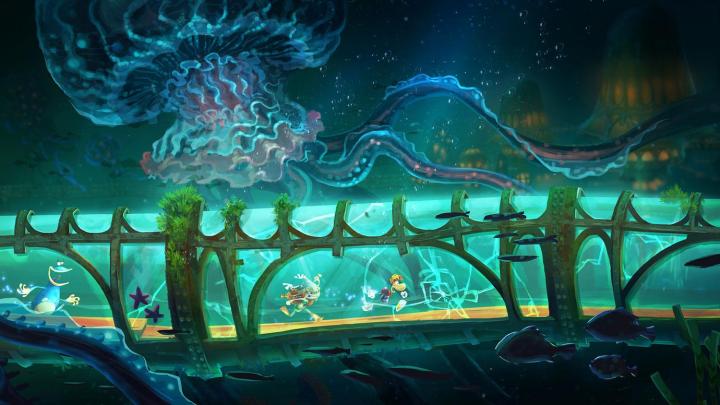
Movements are difficult to see while they’re happening. Sometimes they happen fast; the rise of New Hollywood was so dramatic, so obvious and plain, that it was impossible to not see its tendrils flapping about cinema throughout the 1970s. Film school brats like Martin Scorsese, George Lucas, and Steven Spielberg changed the game, their motions broad and sweeping, so the movement was plain. More often, movements are far subtler, more mercurial. We don’t even know a collective of artists are changing the world in similar ways until well after it’s happened. French New Wave cinema, for example, is much more loosely defined, a style and philosophy of filmmaking that stretched from the ’40s and lasted into the 1970s, only to be codified later by critics and academics that stitched the movement together by connecting the dots in hindsight. Art, music, film, literature; we discuss movements to understand an era of creative expression and technology, to capture the spirit of an age.
Has there ever been a movement in video game design? Discussion of video games is so committed to pulling about genre and mechanics – this is a third-person shooter, this is a platformer, this is an indie puzzler mobile free-to-play blah blah blah – that there sometimes seems to be little room for discussion of philosophy. Was the 8-bit/16-bit console era the Japanese Renaissance, when Nintendo, Capcom, Sega, and their peers stretched video games into emotionally resonant cartoon fantasies? Was the rise of id with Doom and Quake in the early ’90s the start of the American Tech Boom, a movement solidified by Valve and Epic with Unreal and Half-Life in the late-’90s? The movements were there, it just seems like we’ve never defined them. The language has never reflected the motions taking place in the art form itself.
This being Jetsetter, Digital Trends’ weekly column devoted to import gaming and international game development, it should come as no surprise to read here that it was a non-American game designer that brought the notion of video game movements into such stark relief. Michel Ancel, the creator of Rayman and Beyond Good & Evil, taught a Masterclass lesson sponsored by Jeux Video Magazine this weekend. Ancel, who has been designing games for Ubisoft for nearly a quarter-century, is an inspiring game maker even if his games don’t necessarily seem on the surface like industry-defining works. People tend not to talk about Rayman Raving Rabbids with the same reverence as Assassin’s Creed.
They should! When all the cards are down, when the academics and critics of the coming decades start laying down the boundary lines of discussion and look back on the movements of game making, Ancel will be the face of what very well could have been called the French New Wave of video game making. When Ancel started making his own games in the early ’90s, the most popular type of games in the world were about running along a two-dimensional plane and jumping over things. Super Mario Bros., Mega Man, Castlevania, the relative newcomer Sonic the Hedgehog; this was the platformer vanguard. Rather than just an expression of genre, there was a very real philosophy tying these Japanese-made games together. All of them altered the immediacy of arcade games with an expansive narrative style suited to people playing for longer stretches than they would on an arcade cabinet. These were games that invited people to linger inside them, to play them repeatedly not just to improve skill but to enjoy the cartoon world. They were all informed by fantasy animation, as well as the science fiction and horror movies that had been popular in the era preceding it.
Ancel’s Rayman flipped the style on its head. Rayman was recognizable as a platformer, but it was much slower-paced than Japan’s games, its detailed characters even more expressive. Rayman himself wasn’t just supposed to be cute and bright; he was actually funny. There was a playfully pervy undercurrent in the game that’s preserved in the newer games, Rayman Origins and Rayman Legends, a vein of body humor missing from the previous decade’s games. Rayman was, and still is, a deeply physical game.
Ancel’s philosophy, taking the cartoon fun and style of past platformers and making it more bodily experience, was reflected in other French game makers working at the time. Eric Chahi’s Another World was outwardly very different from Rayman, but like Ancel, Chahi mixed physicality into the running-and-jumping games that hadn’t been prominent before. Another World is also slow and surreal compared to previous, similar platformers. Its spooky science fiction has you carefully leaping about labs and caves trying to survive on an alien world. There’s a vein of sick humor here as well. Running from one screen to the next blindly in Another World will often result in your getting impaled on some jagged rocks. It’s shocking but also silly. That sinister silliness shares a lot with Rayman‘s bawdiness.
Ancel and Chahi both continued with their style through the ’90s. Ancel turned to 3D game making with Rayman 2 while Chahi continued to push the possibilities of game animation with Heart of Darkness. After that, they diverged. Ancel turned toward more cinematic game making with Beyond Good & Evil and King Kong while Chahi disappeared from game making all together until 2011’s From Dust. The ‘French New Wave of Platformers,’ if you will, was all too brief, but you can see its spirit in modern games like Playdead’s Limbo. What movement is Limbo a part of? Indie Surrealism? Something crazy, no doubt. We’re a touch too close to the game making world today to name its motions, but just because we can’t see it or don’t have the names just yet doesn’t mean the movements aren’t happening.
Editors' Recommendations
- Rayman returns in Mario + Rabbids Sparks of Hope DLC later this month
- Ubisoft’s Michel Ancel accused of abusive workplace behavior following departure


